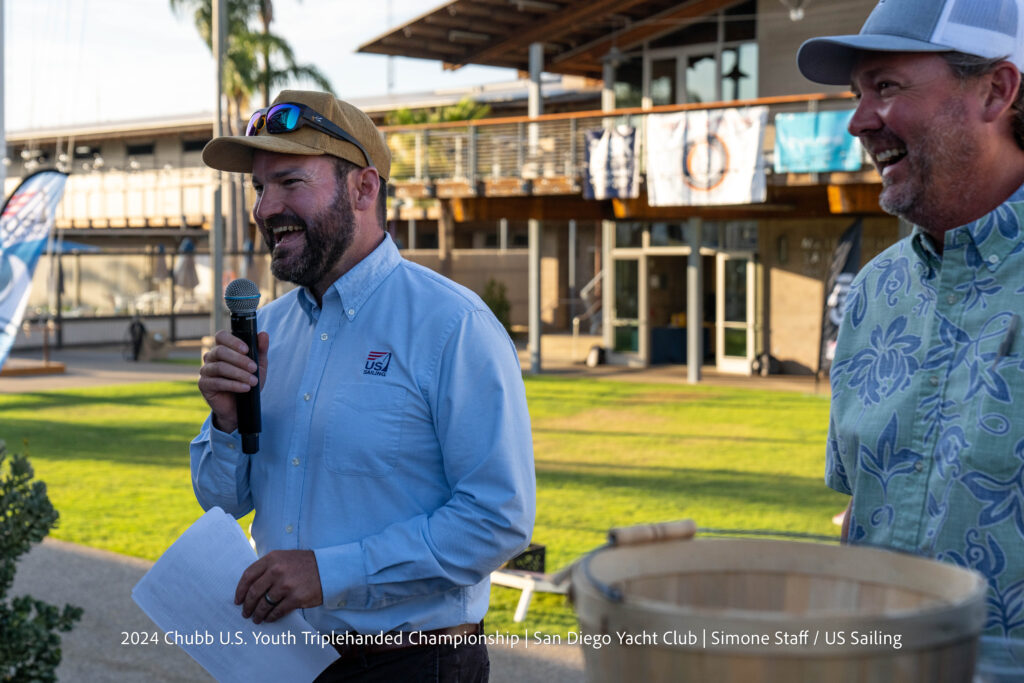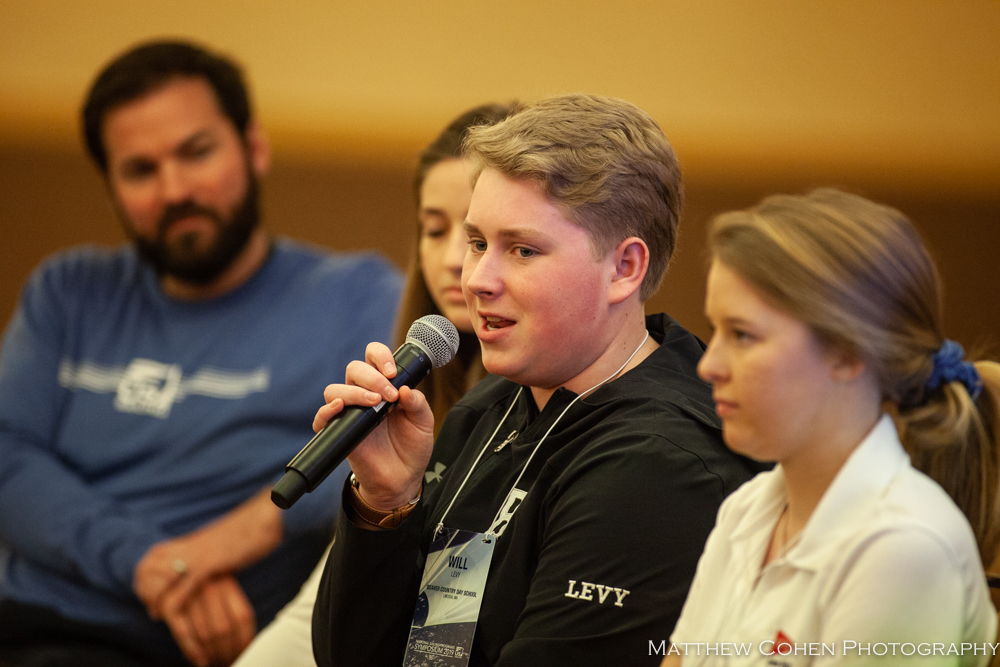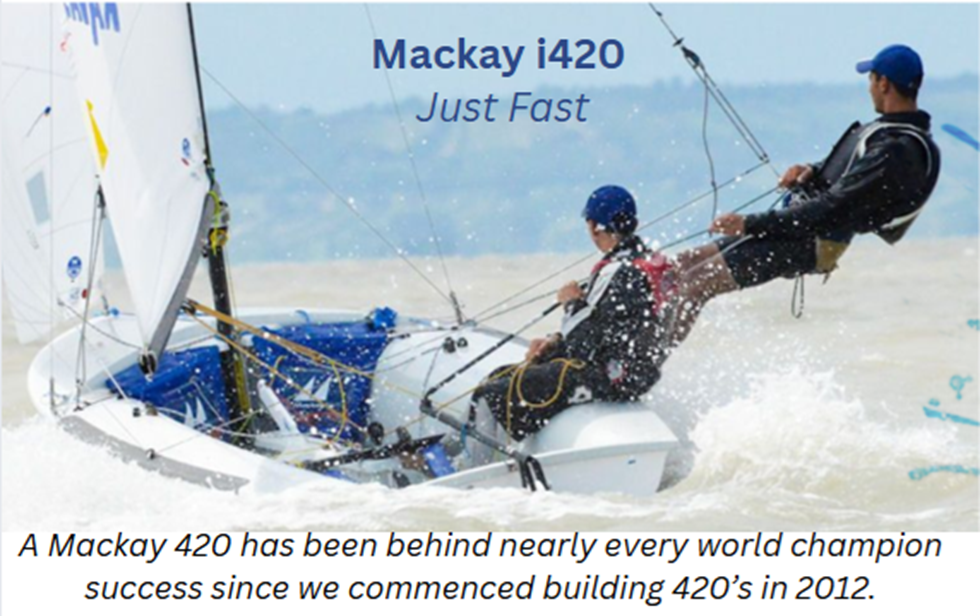By S1D Writer Tate Theodorsen
Youth sailing has long been a vibrant and evolving aspect of the sport, but it now faces new challenges and opportunities as the landscape shifts. To explore these dynamics, we spoke with John Pearce, Youth Racing Director at US Sailing. With decades of experience as a sailor, coach, and leader, Pearce offers invaluable insights into the trends shaping youth sailing, US Sailing’s initiatives to foster talent, and the evolving pathways available to young competitors.
Building a Foundation: Pearce’s Sailing Journey

John Pearce’s passion for sailing began on the cold waters of the Finger Lakes in Ithaca, New York. “It’s a great place to grow up sailing, although the season is short,” he recalls. Pearce spent his youth racing Optimists and Lasers before competing at Hobart and William Smith Colleges, where his love for the sport deepened.
After transitioning from competitor to coach, Pearce worked with elite collegiate programs at Stanford, Dartmouth, and George Washington University. “Coaching became my focus,” he shares, reflecting on how these experiences shaped his vision for sailor development. Today, as US Sailing’s Youth Racing Director, Pearce leads initiatives like clinics, championships, and the newly launched US Youth National Team. His mission? To give young sailors the tools and opportunities to realize their competitive potential while building the foundation for lifelong involvement in the sport.
Trends Shaping Youth Sailing
Youth sailing in America is evolving rapidly. Popular boat classes like the Optimist, ILCA (Laser), and 420 continue to attract strong national participation, and there’s growing diversity in the types of boats sailors compete in. This variety, Pearce explains, is vital for developing well-rounded sailors. “Learning to master different boats and conditions builds versatile skills that translate to higher levels of competition.”
However, these national trends have their downsides. Local and regional sailing are shrinking as many young sailors focus on national and international events. “Local fleets are smaller than they used to be,” Pearce admits. While elite-level regattas provide exciting opportunities, the decline in grassroots participation risks alienating beginners and families who may not have the time or resources to compete on larger stages.
US Sailing recognizes this challenge. “We’re working to strengthen grassroots programs by sharing best practices among clubs and regional associations,” Pearce says. Efforts like the annual Sailing Leadership Forum bring stakeholders together to foster collaboration and ensure local programs remain vibrant. By creating welcoming environments for new sailors, US Sailing hopes to reignite enthusiasm for regional events while maintaining the allure of national competition.
Beyond competition, Pearce emphasizes the importance of camaraderie in youth sailing. “Regattas are more than just races,” he says. “They’re where sailors connect, learn from each other, and form lifelong friendships.”
Strengthening Pathways to Elite Competition
For young sailors aspiring to collegiate or international success, US Sailing has created a more transparent pathway through initiatives like the US Sailing Youth National Team. “We’ve worked to make the system clearer and more accessible,” Pearce explains. Sailors who excel at events like class midwinters or national championships can earn a spot on the team, giving them access to top-tier coaching and international competition.
But while these programs create opportunities for elite sailors, they also highlight an ongoing challenge: balancing the resources devoted to high-performance racing with the need to support grassroots development. Pearce acknowledges this tension, noting that US Sailing’s role is often to “pave the road, not create new ones,” ensuring that existing pathways are efficient and accessible.

The Role of Regattas in Skill Development
Regattas are the cornerstone of youth racing, providing young athletes with invaluable opportunities to test their skills in real-world conditions. “Racing develops everything from boat handling and tactical decision-making to mental resilience,” Pearce explains. These events also teach life skills like time management, teamwork, and adaptability—qualities that benefit sailors long after they leave the water.
Despite their importance, regattas can be intimidating for newcomers due to logistical and financial barriers. “Local and regional regattas are the foundation, and while US Sailing can’t be at every local event, we can help with increasing the number of trained race officials and instructors, and sharing best practices with organizers, programs, and parents. Regattas need to be safe and fun, first and foremost, and that will keep sailors coming back”, Pearce says.
Sailing Towards the Future
As youth sailing navigates a rapidly changing world, US Sailing is positioning itself as a leader in fostering talent and broadening access to the sport. By creating opportunities for sailors to compete, grow, and connect—whether at local regattas or national championships—the organization is helping to secure a bright future for American sailing.
But challenges remain. Addressing the decline in local fleets, making elite programs accessible to all, and fostering diversity in participation are critical for the sport’s long-term health. Pearce is optimistic: “There’s a place for every sailor to thrive—whether they’re racing Optis, transitioning to college sailing, or exploring new avenues like wingfoiling.”
For young sailors, the message is clear: the racecourse is open, and the possibilities are endless. With the right balance of innovation, support, and community, youth sailing can continue to inspire the next generation.

Leave a Reply